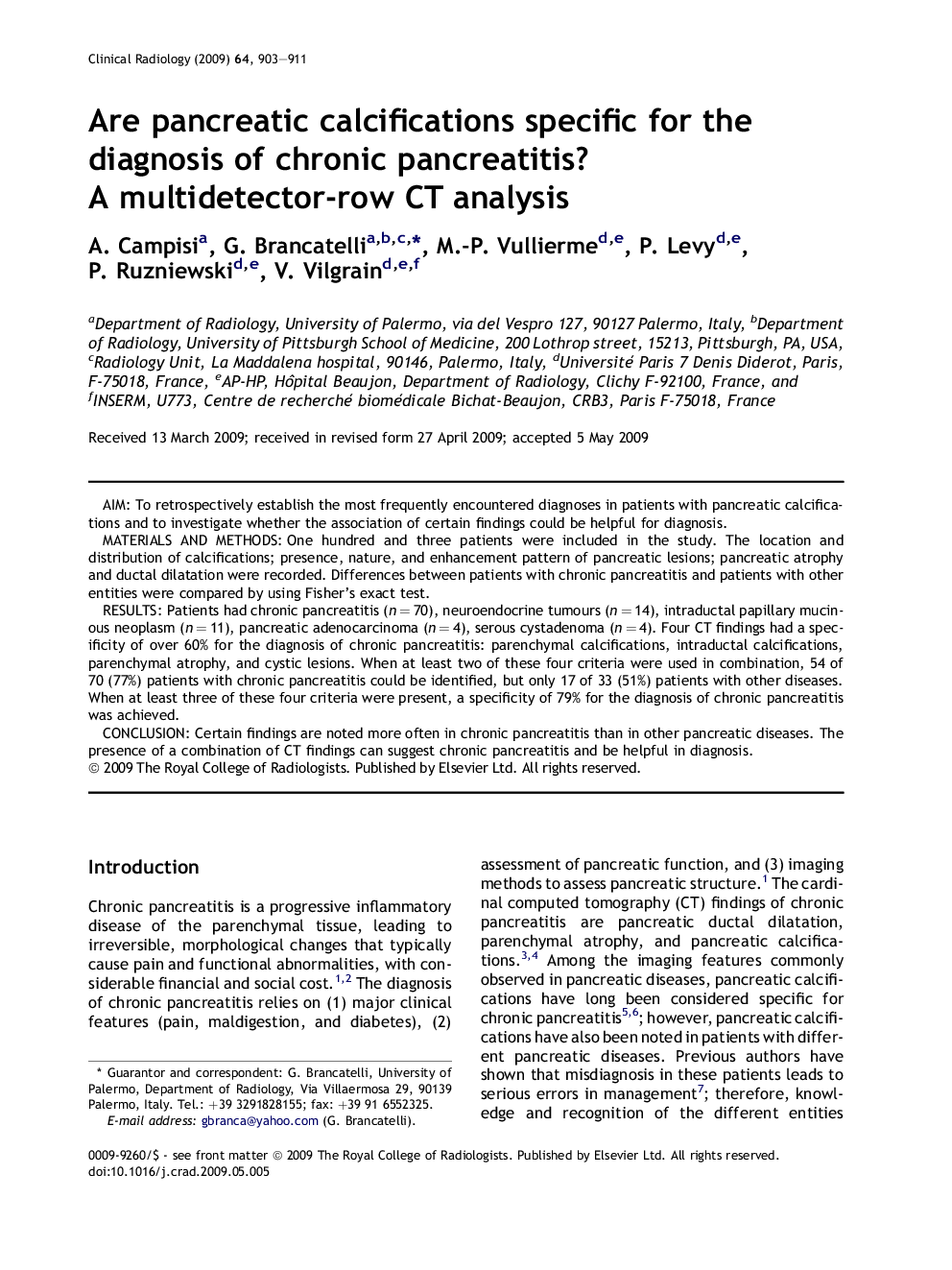| Article ID | Journal | Published Year | Pages | File Type |
|---|---|---|---|---|
| 3984054 | Clinical Radiology | 2009 | 9 Pages |
AimTo retrospectively establish the most frequently encountered diagnoses in patients with pancreatic calcifications and to investigate whether the association of certain findings could be helpful for diagnosis.Materials and methodsOne hundred and three patients were included in the study. The location and distribution of calcifications; presence, nature, and enhancement pattern of pancreatic lesions; pancreatic atrophy and ductal dilatation were recorded. Differences between patients with chronic pancreatitis and patients with other entities were compared by using Fisher's exact test.ResultsPatients had chronic pancreatitis (n = 70), neuroendocrine tumours (n = 14), intraductal papillary mucinous neoplasm (n = 11), pancreatic adenocarcinoma (n = 4), serous cystadenoma (n = 4). Four CT findings had a specificity of over 60% for the diagnosis of chronic pancreatitis: parenchymal calcifications, intraductal calcifications, parenchymal atrophy, and cystic lesions. When at least two of these four criteria were used in combination, 54 of 70 (77%) patients with chronic pancreatitis could be identified, but only 17 of 33 (51%) patients with other diseases. When at least three of these four criteria were present, a specificity of 79% for the diagnosis of chronic pancreatitis was achieved.ConclusionCertain findings are noted more often in chronic pancreatitis than in other pancreatic diseases. The presence of a combination of CT findings can suggest chronic pancreatitis and be helpful in diagnosis.
